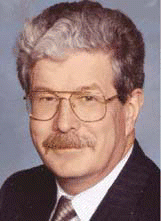David W. Kennedy, MD, is Vice Dean for Professional Services and Senior Vice President of the University of Pennsylvania Health System and is Professor of Otorhinolaryngology at University of Pennsylvania School of Medicine in Philadelphia.
Explore This Issue
February 2007Endoscopic sinus surgery was introduced into the United States more than 20 years ago; over that time period it has undergone significant changes, in terms of both surgical technique and our understanding of the disorder of chronic rhinosinusitis. However, the concept of using a transnasal approach is far from novel. The ancient Egyptians used the transnasal route to remove brain tissue prior to mummification. The approach was used surgically but then fell into disrepute with the era of prefrontal lobotomy.
Endoscopic sinus surgery itself has become more meticulous, with greater attention to both mucosal preservation and the complete removal of bony partitions within the area of disease. Technological advances have markedly improved our endoscopic capabilities, and further developments on the horizon promise to further expand the surgical potential. To date the surgical techniques originally introduced for inflammatory disease have been extended to skull base and pituitary tumors, orbital lesions and skull base defects, and our ability to tackle lesions within the frontal sinus has been significantly expanded. At the same time, rhinology itself has become an identified subspecialty, with approximately 20 institutions now offering advanced fellowship training in the field of rhinology and sinus disorders.
What We Know Now
Although we still have a long way to go, we have learned significantly more about some of the etiologic factors involved in chronic rhinosinusitis, and we know that this disease has a markedly greater impact on quality of life than was previously appreciated by most otolaryngologists, let alone by physicians in other specialties.
Twenty years ago we thought that anatomic factors were a major factor in the pathogenesis of this disease and that providing ventilation alone was sufficient to resolve the majority of cases. Today we better understand the complexity of the disorder of chronic rhinosinusitis and the interplay of complex environmental, general, and local host factors in its genesis. We understand that chronic disease is not primarily a bacterial infection, but is an inflammatory disorder that may be exacerbated by bacteria or fungi. We also believe that the bacteria may, at least in some situations, exist in a biofilm, relatively resistant to both antibiotics and our own host responses. The associated inflammation is also able to spread through the underlying bone, and the bone inflammation itself may be a significant factor in this disease process.

Leave a Reply